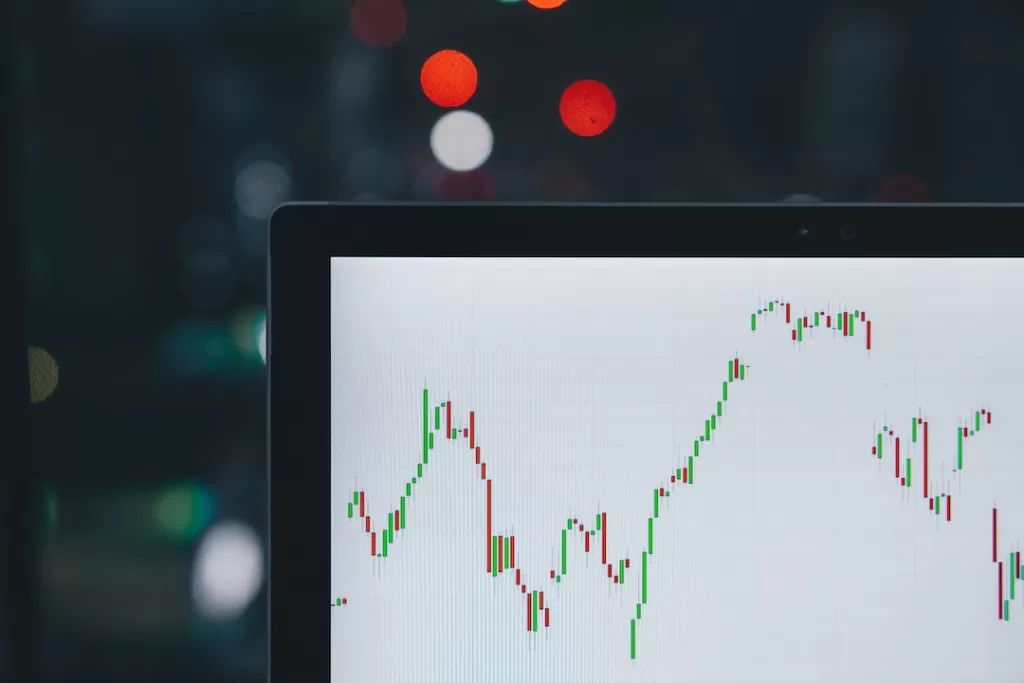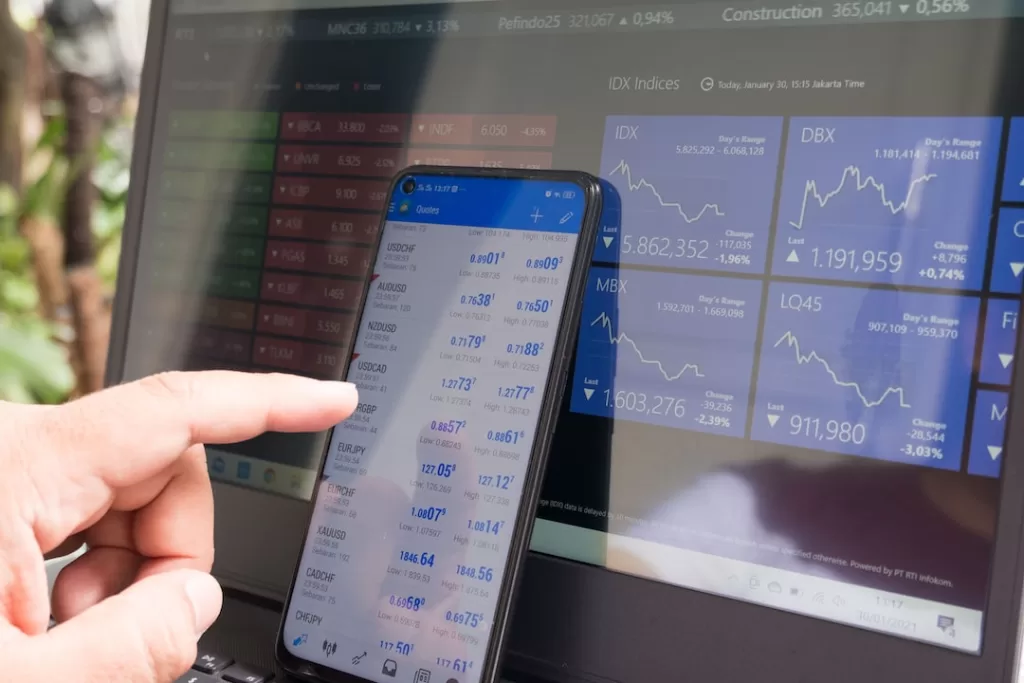Investors seeking to build a robust long-term investment portfolio often consider diversifying their holdings with dividend-paying stocks. Dividend stocks are known for their ability to provide a consistent income stream and can play a crucial role in generating long-term wealth. In this article, we will explore the world of dividend stocks, how to identify the best ones to buy, investing strategies, understanding the risks and rewards, and the long-term benefits of holding dividend-paying stocks.
Disclaimer: This information is general in nature and for informational purposes only. It is not personal financial advice and has not taken into account your personal financial position or objectives. Make sure to refer to a licensed financial or tax advisor.
Disclaimer: This article is not personal financial advice but intended for educational purposes only- make sure you seek financial and tax advice from a professional.
Table of Contents
What are Dividend Stocks?
Dividend stocks are shares of companies that pay out a portion of their earnings to shareholders in the form of dividends. This is a way for companies to share their profits with investors, providing them with a regular income stream.
How do Dividend Stocks Work?
When you own shares of a dividend-paying company, you are entitled to receive a portion of the company’s profits in the form of dividends. These dividends are typically paid quarterly, although some companies may choose to pay them annually or semi-annually.
What are the Benefits of Investing in Dividend Stocks?
Investing in dividend stocks offers several advantages. Firstly, they can provide a steady income stream, making them an attractive option for income investors. Additionally, dividend-paying stocks can also offer the potential for long-term growth, as companies that pay dividends tend to be more financially stable and mature.
What Factors Should I Consider When Choosing Dividend Stocks to Buy?
When evaluating dividend stocks, consider factors such as the company’s dividend yield, dividend growth rate, payout ratio, and the company’s ability to generate free cash flow.
How to Identify the Best Dividend Stocks to Buy
Identifying the best dividend stocks requires an understanding of key metrics and factors that can impact their long-term performance. ###
What is Dividend Yield and Why is it Important?
Dividend yield is a key metric that indicates the annual dividend payment as a percentage of the stock’s current price. A higher dividend yield can signal an attractive investment opportunity, but it’s important to analyze other factors as well.
What is Dividend Growth and How Does it Impact Long-Term Investments?
Dividend growth refers to the rate at which a company increases its dividend over time. Companies with a consistent track record of raising their dividends annually may be indicative of a strong financial position and long-term growth potential.
How Do I Evaluate a Company’s Ability to Pay Dividends?
Assessing a company’s ability to pay dividends involves analyzing its earnings growth, cash flow, and the stability of its dividend payout ratio. A healthy balance sheet and robust cash flow are indicators of a company’s ability to sustain its dividend payments.
Key Dividend Stock Analysis Factors
Determining which dividend payers are poised to deliver over the long run requires weighing fundamentals:
- Dividend History – Consecutive years of maintained or rising dividends signal healthy underlying businesses built to endure market cycles. Blue chips like 3M have 60+ straight years of increases.
- Payout Ratios – Dividend safety is paramount. Ratios below 60% provide sufficient cushion while ratios above 80% raise red flags.
- Earnings Consistency – Study earnings across market environments. Consistent profitability and moderate but dependable growth provides the capacity to fund increasing dividends long-term.
- Financial Strength – Investment grade balance sheets provide vital buffer when market downturns hit. Firms with excess cash holding and low relative debt offer income stability.
- Management’s Capital Allocation Strategy – Ensure leadership teams prioritize maintaining and bolstering the dividend consistently year after year while pursuing accretive growth opportunities benefitting long run payout growth. Avoid firms emphasizing excessive short term distribution raises out of step with business fundamentals.
Investing Strategies for Income and Growth
Investors can pursue different strategies when it comes to dividend investing, depending on their financial goals and risk tolerance.
What Are Some of the Top Dividend Stocks for Long-Term Investment?
Several companies are known for being top dividend stocks, including those that are part of the S&P 500 index. Realty Income, often referred to as the “Monthly Dividend Company,” is one of the world’s largest real estate investment trusts and is known for its regular dividend payments.
How Can Dividend Investing Contribute to a Balanced Portfolio?
Dividend stocks can play a crucial role in maintaining a balanced investment portfolio, providing a consistent income stream while also offering the potential for long-term capital appreciation.
What Are the Considerations for Investing in Dividend Aristocrats?
Dividend aristocrats are companies that have a consistent track record of raising their dividends year after year. Investing in dividend aristocrats can offer investors the opportunity to benefit from a history of reliable and growing dividend payments.
Understanding the Risks and Rewards of Dividend-Paying Stocks
While dividend-paying stocks offer several advantages, it’s important to be aware of the potential risks that come with investing in them.
What Impact Does a Company’s Payout Ratio Have on Dividend Stability?
The payout ratio, which measures the proportion of earnings paid out as dividends, can affect a company’s ability to maintain its dividend payments. A high payout ratio may indicate that a company is distributing a large portion of its earnings to shareholders, leaving less for reinvestment and potential growth.
How Does Earnings Growth Affect a Company’s Dividend Payment?
A company’s earnings growth can influence its ability to sustain and increase its dividend payments. Strong earnings growth can support higher dividend payouts, while stagnant or declining earnings may impact the company’s dividend policy.
What Role Does Free Cash Flow Play in Sustaining Dividend Payouts?
Free cash flow is an important metric for assessing a company’s ability to sustain its dividend payouts. Positive free cash flow indicates that a company has sufficient funds to cover its dividend obligations and invest in future growth opportunities.
Long-Term Benefits of Holding Dividend-Paying Stocks
Holding dividend-paying stocks can offer several advantages for long-term investors seeking to build wealth and generate a reliable income stream.
How Can Dividend Stocks Contribute to Total Return on Investment?
Dividend stocks can contribute significantly to the total return on investment, as they provide both dividend income and the potential for stock price appreciation over time.
Why Are Dividend-Paying Stocks Attractive for Income Investors?
For income investors, dividend-paying stocks offer the opportunity to generate a consistent income stream, providing financial stability and regular cash flow to support their living expenses or reinvest in additional investments.
What Factors Should I Monitor When Holding Dividend Stocks for the Long Term?
When holding dividend stocks for the long term, investors should monitor factors such as changes in the company’s dividend policy, earnings stability, and overall market conditions to ensure the continued strength and reliability of their investment.
Where to Research Dividend Stocks
Many online brokerages such as Charles Schwab and Fidelity provide helpful tools for screening and analyzing dividends stocks based on yields, payout ratios, dividend growth streaks and more. Investors can scan for stocks meeting their criteria.
Websites like Seeking Alpha provide in-depth coverage of dividend stocks and income strategies from contributors. Morningstar’s DividendInvestor focuses specifically on income investing approaches and ideas. Value Line and CFRA provide deep fundamental analysis on dividend payers.
What Makes a Good Long-Term Dividend Stock
- Consistent dividend growth history – The longest track records of steady dividend increases signal healthy underlying businesses built to last.
- High but sustainable dividend payout ratios – Payout ratios below 60% provide safety buffers without impeding growth.
- Clear cash flow visibility – Steady cash flows ensure dividends remain well covered by earnings.
- Shareholder-friendly management – Commitment to maintaining and growing the dividend is key.
- Reasonable debt levels – Too much debt pressures the ability to sustain dividends during market downturns.
Mitigating Risks Across Market Sectors
Diversification is critical when constructing dividend portfolios, as different sectors carry unique economic exposures that concentrate risks that crystallize in stock price drawdowns and dividend reductions when market or sector downturns emerge.
Staples Provide Defensive Income
Defensive sectors like consumer staples offer investors steady dividends through all economic environments. Leaders in essential consumer goods like Procter & Gamble, Pepsi and Kimberly-Clark give investors exposure to products facing inelastic demand regardless of market conditions.
The steady dividends from these defensive champions provide ballast to portfolios during recessions when cyclical stocks face severe financial stress.
Utilities: Reliable Dividends from Grid Operators
Top utility operators and clean power generators like NextEra Energy operate largely regulated and contracted businesses that provide highly reliable revenues to support consistent dividend payouts rain or shine.
Federal and state oversight results in transparent returns and dividends with visibility for years ahead, making utilities a favorite among income oriented investors.
Healthcare’s Enduring Dividend Appeal
Stalwart healthcare companies such as Johnson & Johnson and Pfizer provide investor portfolios with a combination of reliable dividends and innovation driven growth.
As biotechnology breakthroughs and healthcare consumption grow with aging populations globally, top pharma players offer investors dividend income along with appreciation, bolstered by thick margins and recession resilience that stems from non-discretionary demand for medicines and treatments.
Technology: Favor Cash Flow Stability
The technology sector requires careful dividend stock selection to avoid those at risk of disruption and cash flow erosion. Focusing on diversified stalwarts with leadership positions like Texas Instruments for analog semiconductors gives investors reliable income streams.
Cloud computing giant Microsoft presents investors with a rare combination of three decade dividend growth paired with double digit annual earnings expansion to drive shareholder value.
Understand Credit Ratings Matter for Financial Stocks
During periods of economic stress, the financial sector carries unique risks that manifest through spiking loan losses and challenging capital markets flagging dividends at risk names like Bank of America. Monitoring the highest credit rated steadfast companies such as JP Morgan helps income investors benefit from healthy dividends and buybacks underpinned by ironclad balance sheets.
The Power of Dividend Reinvestment For Long Term Wealth Building
Reinvesting dividends through a Dividend Reinvestment Program (DRIP) allows shareowners to benefit from the power of exponential dividend growth over long periods of time. Historical results from dividend luminaries like Warren Buffett and John Bogle prove this concept. Per Bogle:
“Over my 65-year career in the mutual fund industry, reinvested dividend income accounted for approximately 95% of the compound long-term return earned by the companies in the S&P 500 Stock Index.”
And, as Warren Buff claims:
“My wealth has come from a combination of living in America, some lucky genes, and compound interest”
The compound interest he talks about is from the compounding effect of dividend reinvestment.
Ways to Reinvest Dividends
- Individual Stock DRIPs – Companies like Apple and Microsoft allow automatic dividend reinvestment into additional shares.
- Mutual Funds – Funds focused specifically on dividends take care of reinvesting income distributions.
- Brokerage Accounts – Leading firms like Schwab and Fidelity offer automatic dividend reinvestment options.
The combination of rising payouts and continual reinvestment unlocks exponential dividend growth potential over long investment horizons.
By taking the time to analyze dividend safety and growth prospects, long-term investors stand to benefit from secure and growing passive income streams.
18 of the Best Dividend Stocks for Long Term Growth
Here are 18 dividend stocks that offer a balanced portfolio for long term growth. These are just an example. As always, you should do your own research and take the information in this article to instruct your research. The following picks are based on dividend consistency, growth, and overall stability of the businesses. They are up-to-date at the time of writing so again, do your own research.
1. Johnson & Johnson
- Dividend Yield: 2.5%
- Consecutive Annual Dividend Increases: 59 years
The healthcare giant Johnson & Johnson is a dominant force benefiting from its diversified business across pharmaceuticals, medical devices and consumer health products. J&J’s well-known global brands allow it withstand economic downturns while it continues lifting its dividend year after year for nearly 60 consecutive years now.
2. Coca-Cola
- Dividend Yield: 2.9%
- Consecutive Annual Dividend Increases: 59 years
Coca-Cola is possibly one of the most steady dividend growth stocks on the entire market with its globally diversified beverage empire protected by strong brand recognition, distribution scale, and years of dividend increases under its belt. The company continues finding growth with new products while its increasing annual payout remains rock solid.
3. Procter & Gamble
- Dividend Yield: 2.5%
- Consecutive Annual Dividend Increases: 65 years
Procter & Gamble is a dividend king with 65 straight years of dividend growth underpinned by its portfolio of leading consumer product brands including Gillette, Head & Shoulders, Pampers and Tide. P&G is a very reliable stock for dividends given its stability and long-term orientation.
4. 3M
- Dividend Yield: 4.9%
- Consecutive Annual Dividend Increases: 63 years
Innovation leader 3M enjoys some of the strongest competitive advantages in the industrials sector with its leading brands, patented technologies, distribution scale, and balanced end-market exposure. With dividends growing for over six consecutive decades, 3M is about as reliable as they come.
5. Walmart
- Dividend Yield: 1.5%
- Consecutive Annual Dividend Increases: 48 years
The stable high yields from Walmart make it one of the best dividend aristocrats having raised its dividend for 48 years straight. Its powerful omnichannel platform provides sustainable growth and income for long-term investors.
6. AbbVie
- Dividend Yield: 3.8%
- Consecutive Annual Dividend Increases: 9 years
One of the fastest growing and highest yielding dividend stocks, AbbVie has delivered a strong performance since being spun off from other healthcare manufacturer Abbott Laboratories in 2013 with no signs of its rapid dividend growth slowing.
7. Johnson Controls
- Dividend Yield: 2%
- Consecutive Annual Dividend Increases: 138 years
Johnson Controls has paid uninterrupted dividends since 1885 with operations across heating/cooling, fire detection, and energy storage solutions. The company continues adapting and evolving with some of the longest dividend records in the stock market.
8. McDonald’s
- Dividend Yield: 2.1%
- Consecutive Annual Dividend Increases: 45 years
The unmatched scale, efficiency and stability of McDonald’s global restaurant operations have translated into safe and steadily growing dividends over the long run. MCD will likely continue lifting its payout given the timeless appeal of its offerings.
9. PepsiCo
- Dividend Yield: 2.6%
- Consecutive Annual Dividend Increases: 50 years
Global snacks and beverage giant PepsiCo maintains diversified revenue streams between its drinks and Frito Lays food business. Having raised its annual dividend for half a century, PepsiCo still has substantial room for further payout growth.
10. Colgate Palmolive
- Dividend Yield: 2.4%
- Consecutive Annual Dividend Increases: 59 Years
Colgate operates one of the most widely recognized and stable consumer brands in household goods spanning oral, personal and home care products. Its steady cash flows support an impressive track record of nearly 60 years of consecutive dividend growth.
11. Sherwin Williams
- Dividend Yield: 1%
- Consecutive Annual Dividend Increases: 42 Years
Leading paints & coatings manufacturer Sherwin Williams enjoys durable competitive advantages from its scaled distribution network, leading brands like Minwax, and innovations pipeline, fueling reliable long-term dividend growth and stability for investors.
12. Air Products & Chemicals
- Dividend Yield: 2.7%
- Consecutive Annual Dividend Increases: 40 years
With four decades of dividend increases under its belt, industrial gases powerhouse Air Products and Chemicals provides essential products and equipment with recurring revenue streams across diverse end markets. This makes its dividends reliably safe.
13. Target
- Dividend Yield: 2.1%
- Consecutive Annual Dividend Increases: 50 years
Big box retailer Target maintains tremendous scale in general merchandise both online and across nearly 2,000 physical stores nationwide. With half a century of dividend growth already behind it, Target has plenty of runway left.
14. Federal Realty Investment Trust
- Dividend Yield: 4.5%
- Consecutive Annual Dividend Increases: 54 Years
Specializing in retail-focused real estate, Federal Realty Investment Trust enjoys decades of dividend growth supported by high occupancy rates across premium mixed-use properties with rising rental income streams. Its dividends should continue rising steadily.
15. American States Water
- Dividend Yield: 1.5%
- Consecutive Annual Dividend Increases: 67 Years
With contract-based revenue from water utilities and military bases, American States Water generates very reliable cash flows to fund more than six straight decades of dividend growth so far and with more likely to come.
16. Visa
- Dividend Yield: 0.7%
- Consecutive Annual Dividend Increases: 13 Years
Credit card payments giant Visa enjoys strong market share and immense network effects providing fuel for 13 years and counting of rapidly rising dividends. With digital payments in infancy globally, Visa and its dividend have substantial room to run.
17. Lockheed Martin
- Dividend Yield: 2.3%
- Annual Dividend Increases: 17 Consecutive Years
A key defense contractor and major technology innovator, Lockheed Martin has rapidly become a dividend growth juggernaut with substantial cash flow visibility from its contracted government business to support 17 years of payout expansions and counting.
18. Texas Instruments
- Dividend Yield: 2.9%
- Annual Dividend Increases: 18 Consecutive Years
Texas Instruments has transformed into a reliable dividend stock from a former cyclical semiconductor name with 18 years of payout growth underpinned by exposure to diverse end markets and the essential nature of its analog chip offerings.
Mutual Funds and ETFs Can Expand Dividend Exposure
For investors looking to spread exposure across many dividend payers, mutual funds and ETFs focused specifically on dividends can provide instant diversification. Consider the following options:
1. Vanguard Dividend Appreciation ETF (VIG)
- Yields 1.7%
- Provides broad dividend growth exposure
- 10 years of 9.15% annual returns
2. Schwab US Dividend Equity Fund (SCHD)
- Yields: 3.4%
- Focused on high yields with growth
- 10 year annual returns of 11.29%
3. Fidelity Dividend Growth Fund (FDGFX)
- Yields 1.3%
- Targets rapidly growing dividends
- 10 year annual return of 12.76%
4. Vanguard High Dividend Yield Index Fund (VYM)
- Yields 3.1%
- Broad index of 400+ dividend payers
- 10 year annual returns of 9.32%
Conclusion: Dividends Drive Long Term Total Returns
Constructing a diversified portfolio of high quality dividend stocks takes time and fundamental analysis of factors like cash flow visibility, dividend track record, and credit health to ensure reliable income sustainability. But dividends lie at the heart of long term total returns.
As famed investor Charles Schwab observed on their central importance:
“I don’t look at dividends alone as a measure of a great income stock, but dividends have made up a large portion of stocks’ total return over time and really should be a focus for investors.”
By taking the time to analyze dividend safety and understand sector risks, long term investors position themselves to earn substantial compound returns through rising payouts and price appreciation while securing durable passive income streams along the way.
FAQ
What are dividend-paying stocks?
A: Dividend-paying stocks are stocks of companies that distribute a portion of their profits to shareholders in the form of dividends. These dividends are typically paid quarterly and can provide a steady income stream for investors.
What are the benefits of investing in dividend-paying stocks for the long term?
A: Investing in dividend-paying stocks for the long term can provide a source of passive income, as well as the potential for capital appreciation. Additionally, companies that consistently pay dividends tend to be well-established and financially stable.
How can I identify the best dividend-paying stocks for the long term?
A: When identifying the best dividend-paying stocks for the long term, look for companies with a strong track record of dividend increases, a high dividend yield, and a history of financial stability and consistent earnings growth.
What is the significance of a stock’s dividend yield?
A: A stock’s dividend yield is a measure of how much a company pays out in dividends relative to its share price. It is calculated by dividing the annual dividend by the stock’s current share price and is an important indicator of the income potential of a stock.
Are realty income stocks a good investment for income?
A: Realty income stocks are known for their consistent and increasing dividends, making them a popular choice for income-focused investors. The company has a long track record of paying monthly dividends, making it an attractive option for those seeking regular income.
What are the key characteristics of undervalued dividend stocks?
A: Undervalued dividend stocks are typically trading at a lower price relative to their intrinsic value, making them potentially attractive investments. These stocks may offer a higher dividend yield and the potential for capital appreciation as the market recognizes their true value.
How can I build a diversified portfolio of dividend-paying stocks?
A: Building a diversified portfolio of dividend-paying stocks involves selecting stocks from different sectors and industries to spread out the risk. It’s important to consider factors such as dividend growth potential, payout ratios, and overall market conditions when constructing a dividend-focused portfolio.
What should dividend investors look for in small-cap stocks?
A: Dividend investors looking at small-cap stocks should prioritize companies with a history of solid earnings and a commitment to dividend payments. While small-cap stocks may carry higher risk, they can also offer the potential for significant dividend growth and capital appreciation.
How do oil stocks fit into a dividend-focused investment strategy?
A: Oil stocks can be a part of a dividend-focused investment strategy, as some companies in this sector have a history of paying attractive dividends. Investors should analyze factors such as oil prices, production levels, and the company’s financial health when considering oil stocks for dividend income.
What factors should I consider when evaluating the best dividend-paying stocks for 2023 and beyond?
A: When evaluating the best dividend-paying stocks for 2023 and beyond, consider factors such as the company’s dividend growth rate, earnings outlook, and the sustainability of its dividend payments. It’s also important to assess the company’s competitive position and industry trends.







